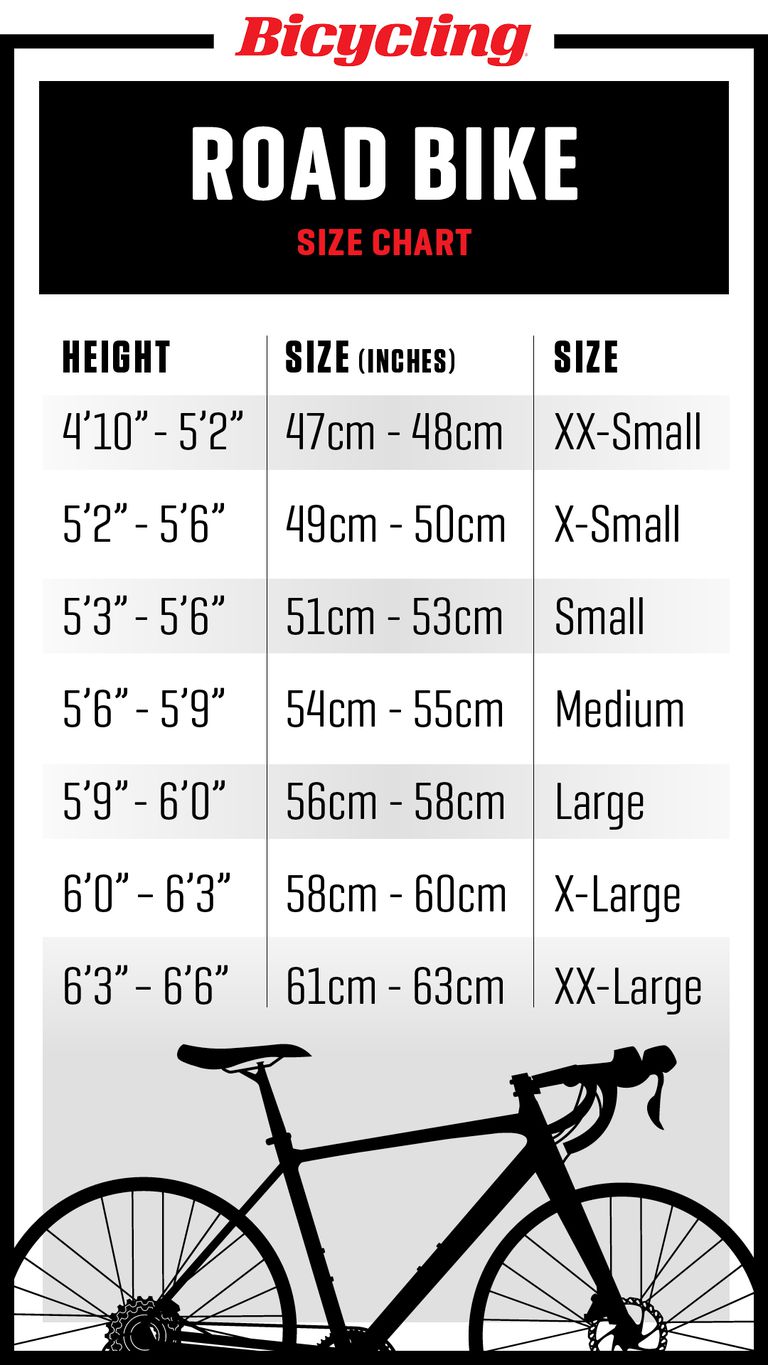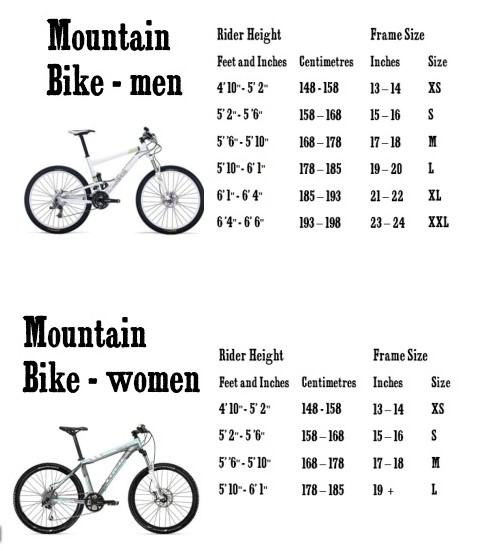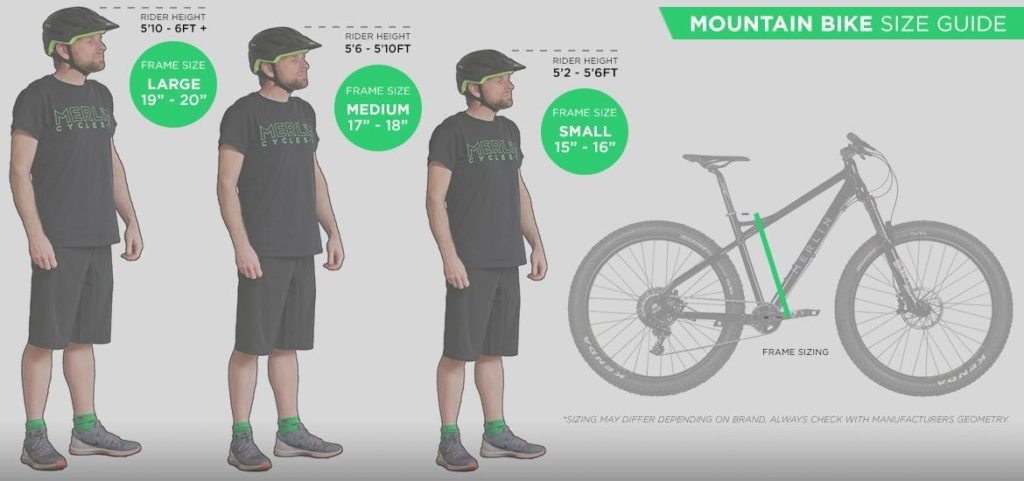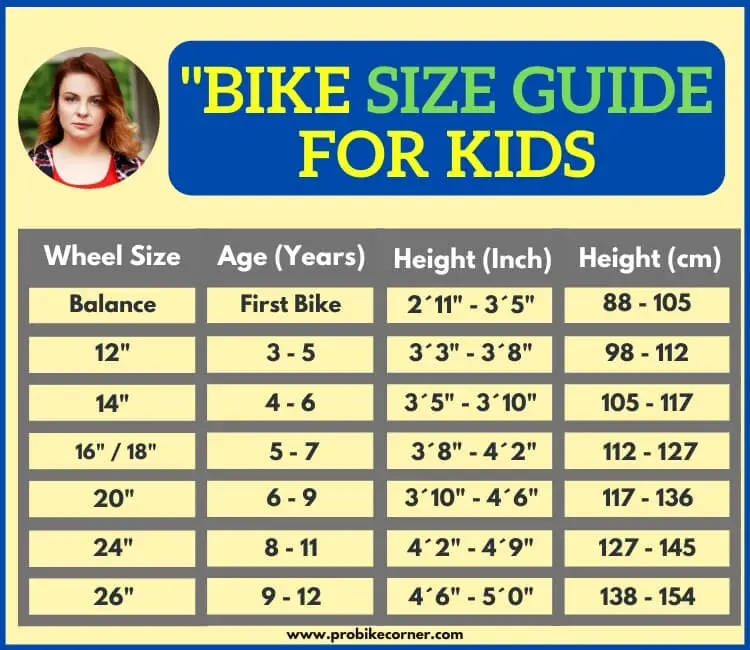Why Bike Size Matters: Avoiding Discomfort and Injury
Choosing the right bike size is crucial for a comfortable and safe riding experience. A poorly fitting bike can lead to discomfort, injury, and decreased performance. When a bike is too small or too large, it can put unnecessary strain on the body, particularly the back, neck, and knees. This can result in a range of issues, from minor aches and pains to more serious injuries, such as tendonitis and nerve damage.
In addition to the physical risks, a bike that is the wrong size can also affect performance. A bike that is too small may not provide enough power or efficiency, while a bike that is too large can be difficult to control. This can be frustrating for riders, especially those who are new to cycling or looking to improve their skills.
So, how do you know what bike size to get? The answer lies in understanding the importance of proper bike fit. A well-fitting bike is one that allows the rider to maintain a comfortable position, with their feet flat on the ground, their knees slightly bent, and their back straight. This position enables riders to generate power, control the bike, and ride safely.
By choosing a bike that is the right size, riders can enjoy a more comfortable and enjoyable riding experience. They can ride for longer periods, explore new terrain, and improve their overall fitness and well-being. In the next section, we will explore how to read bike size charts and take the necessary measurements to ensure a proper fit.
Understanding Bike Size Charts: A Beginner’s Guide
Bike size charts are an essential tool for determining the right bike size. These charts provide a guide for matching a rider’s height and inseam to a specific bike size. However, understanding how to read bike size charts can be confusing, especially for beginners.
Most bike manufacturers, such as Trek and Specialized, provide their own size charts. These charts typically include a range of measurements, including height, inseam, and arm length. To use a bike size chart, riders need to take their measurements and match them to the corresponding bike size.
For example, Trek’s bike size chart recommends the following measurements for a road bike:
- Height: 5’2″ – 5’6″ (157 – 168 cm) = Small
- Height: 5’7″ – 5’11” (170 – 180 cm) = Medium
- Height: 6’0″ – 6’4″ (183 – 193 cm) = Large
Specialized’s bike size chart, on the other hand, recommends the following measurements for a mountain bike:
- Height: 5’2″ – 5’6″ (157 – 168 cm) = Small
- Height: 5’7″ – 5’10” (170 – 178 cm) = Medium
- Height: 5’11” – 6’2″ (180 – 188 cm) = Large
As you can see, different manufacturers have slightly different size charts. This is why it’s essential to consult the specific size chart for the bike you’re interested in. By doing so, you can ensure a proper fit and avoid the risks associated with a poorly fitting bike.
So, how do you know what bike size to get? By understanding bike size charts and taking the necessary measurements, you can make an informed decision and find a bike that fits comfortably and meets your specific needs.
How to Measure Yourself for a Bike: A Step-by-Step Guide
To determine the right bike size, it’s essential to take accurate measurements of your body. This includes your inseam, arm length, and torso length. By taking these measurements, you can ensure a proper fit and avoid the risks associated with a poorly fitting bike.
Here’s a step-by-step guide on how to measure yourself for a bike:
Step 1: Measure Your Inseam
Stand against a wall with your feet shoulder-width apart. Place a book or a ruler between your legs, with the spine or edge against the wall. Measure the distance from the top of the book or ruler to the floor. This is your inseam.
Step 2: Measure Your Arm Length
Stand up straight with your arms at your sides. Measure the distance from the center of your back to the tip of your middle finger. This is your arm length.
Step 3: Measure Your Torso Length
Stand up straight with your arms at your sides. Measure the distance from the base of your neck to the top of your hip bone. This is your torso length.
Once you have taken these measurements, you can use a bike size calculator to determine the right bike size for you. A bike size calculator is a tool that takes into account your measurements and recommends a bike size based on your body proportions.
For example, if you have an inseam of 30 inches, an arm length of 24 inches, and a torso length of 20 inches, a bike size calculator may recommend a bike size of 54 cm. However, it’s essential to note that bike size calculators are not always accurate, and it’s still important to test ride a bike before purchasing.
So, how do you know what bike size to get? By taking accurate measurements of your body and using a bike size calculator, you can make an informed decision and find a bike that fits comfortably and meets your specific needs.
The Role of Bike Type: How Different Styles Affect Sizing
When it comes to choosing the right bike size, the type of bike you’re interested in plays a significant role. Different bike styles, such as road bikes, mountain bikes, and hybrid bikes, have unique sizing requirements. Understanding these differences is crucial to ensure a comfortable and proper fit.
Road bikes, for example, are designed for speed and efficiency. They typically have a more aggressive riding position, which requires a slightly smaller bike size. Mountain bikes, on the other hand, are designed for off-road riding and require a more upright riding position. This means that mountain bikes often have a slightly larger bike size to accommodate the rider’s more upright position.
Hybrid bikes, which combine elements of road and mountain bikes, also have unique sizing requirements. They often have a more relaxed riding position, which requires a bike size that is slightly larger than a road bike but smaller than a mountain bike.
When choosing a bike size, it’s essential to consider the type of bike you’re interested in and its specific sizing requirements. For example, if you’re looking for a road bike, you may want to consider a bike size that is slightly smaller than your mountain bike size. Conversely, if you’re looking for a mountain bike, you may want to consider a bike size that is slightly larger than your road bike size.
So, how do you know what bike size to get for your specific bike type? By understanding the unique sizing requirements of each bike style and considering your own body proportions, you can make an informed decision and find a bike that fits comfortably and meets your specific needs.
Here are some general guidelines to keep in mind:
- Road bikes: Look for a bike size that is slightly smaller than your mountain bike size.
- Mountain bikes: Look for a bike size that is slightly larger than your road bike size.
- Hybrid bikes: Look for a bike size that is slightly larger than a road bike but smaller than a mountain bike.
By considering the type of bike you’re interested in and its specific sizing requirements, you can ensure a comfortable and proper fit. Remember to always test ride a bike before purchasing to ensure the best possible fit.
Test Ride Before You Buy: Ensuring a Comfortable Fit
Once you’ve determined your ideal bike size and style, it’s essential to test ride the bike before making a purchase. Test riding a bike allows you to ensure a comfortable fit, check for control and maneuverability, and get a feel for the bike’s overall performance.
When test riding a bike, pay attention to the following factors:
- Comfort: Does the bike feel comfortable to ride? Are the saddle and handlebars at a comfortable height?
- Control: Does the bike feel stable and easy to control? Can you easily steer and brake?
- Fit: Does the bike fit your body well? Are the pedals and saddle at a comfortable distance?
If you’re test riding a bike and notice any discomfort or issues with control, don’t hesitate to adjust the bike to fit your needs. Most bike shops will allow you to make adjustments to the bike during the test ride, such as raising or lowering the saddle or adjusting the handlebars.
Additionally, consider the following tips when test riding a bike:
- Wear the same type of clothing and shoes you plan to wear when riding the bike.
- Test ride the bike on a variety of terrain, such as hills and flat ground.
- Pay attention to the bike’s weight and balance.
By test riding a bike and paying attention to these factors, you can ensure a comfortable and proper fit. Remember, a bike that fits well is essential for a safe and enjoyable riding experience.
So, how do you know what bike size to get? By combining your knowledge of bike size charts, measurements, and test riding, you can make an informed decision and find a bike that fits comfortably and meets your specific needs.
Common Bike Sizing Mistakes: What to Avoid
When it comes to choosing the right bike size, there are several common mistakes that can lead to a poorly fitting bike. These mistakes can result in discomfort, injury, and decreased performance. By understanding these common mistakes, you can avoid them and find a bike that fits comfortably and meets your specific needs.
One of the most common bike sizing mistakes is buying a bike that is too small. A bike that is too small can cause discomfort and strain on the body, particularly in the neck, back, and knees. It can also lead to decreased performance and control.
On the other hand, buying a bike that is too large can also be a mistake. A bike that is too large can be difficult to control and maneuver, particularly for smaller riders. It can also lead to decreased performance and comfort.
Another common mistake is not considering the type of bike and its specific sizing requirements. Different types of bikes, such as road bikes, mountain bikes, and hybrid bikes, have unique sizing requirements. By not considering these requirements, you may end up with a bike that is not the right size for your needs.
So, how do you know what bike size to get? By avoiding these common mistakes and taking the time to understand your body proportions and the specific sizing requirements of your bike, you can make an informed decision and find a bike that fits comfortably and meets your specific needs.
Here are some tips to help you avoid common bike sizing mistakes:
- Take your measurements carefully and accurately.
- Consider the type of bike and its specific sizing requirements.
- Test ride the bike before purchasing.
- Don’t be afraid to ask for help from a professional bike fitter.
By following these tips, you can avoid common bike sizing mistakes and find a bike that fits comfortably and meets your specific needs.
Bike Sizing for Specific Body Types: Tips and Tricks
When it comes to choosing the right bike size, body type plays a significant role. Different body types, such as petite riders, tall riders, and riders with unique body proportions, require specific bike sizing considerations. By understanding these considerations, you can find a bike that fits comfortably and meets your specific needs.
Petite riders, for example, may require a smaller bike size to accommodate their shorter inseam and arm length. Look for bikes with a lower standover height and a shorter wheelbase to ensure a comfortable fit.
Tall riders, on the other hand, may require a larger bike size to accommodate their longer inseam and arm length. Look for bikes with a higher standover height and a longer wheelbase to ensure a comfortable fit.
Riders with unique body proportions, such as those with longer or shorter torsos, may require a custom bike fit to ensure a comfortable and proper fit. Consider consulting with a professional bike fitter to determine the best bike size and fit for your specific needs.
So, how do you know what bike size to get for your specific body type? By considering your body proportions and the specific sizing requirements of your bike, you can make an informed decision and find a bike that fits comfortably and meets your specific needs.
Here are some tips to help you find a bike that fits your specific body type:
- Petite riders: Look for bikes with a lower standover height and a shorter wheelbase.
- Tall riders: Look for bikes with a higher standover height and a longer wheelbase.
- Riders with unique body proportions: Consider consulting with a professional bike fitter to determine the best bike size and fit for your specific needs.
By following these tips, you can find a bike that fits comfortably and meets your specific needs, regardless of your body type.
Conclusion: Finding Your Perfect Bike Size
Choosing the right bike size is crucial for a comfortable and safe riding experience. By understanding the importance of bike size, how to read bike size charts, and how to measure yourself for a bike, you can make an informed decision and find a bike that fits your specific needs.
Remember to consider the type of bike you’re interested in, as different bike types have unique sizing requirements. Test ride a bike before purchasing to ensure a comfortable fit, and avoid common bike sizing mistakes such as buying a bike that is too small or too large.
For specific body types, such as petite riders, tall riders, and riders with unique body proportions, consider the tips and tricks provided in this article to find a bike that fits comfortably and meets your specific needs.
By taking the time to find your perfect bike size, you can enjoy a more enjoyable and safe riding experience. Don’t settle for a bike that doesn’t fit properly – take the time to find the right size for your body and riding style.
Here is a final checklist to ensure a comfortable and proper fit:
- Understand the importance of bike size and how it affects your riding experience.
- Know how to read bike size charts and take the necessary measurements to ensure a proper fit.
- Consider the type of bike you’re interested in and its unique sizing requirements.
- Test ride a bike before purchasing to ensure a comfortable fit.
- Avoid common bike sizing mistakes such as buying a bike that is too small or too large.
- Consider the tips and tricks provided in this article for specific body types.
By following this checklist, you can ensure a comfortable and proper fit, and enjoy a more enjoyable and safe riding experience.







